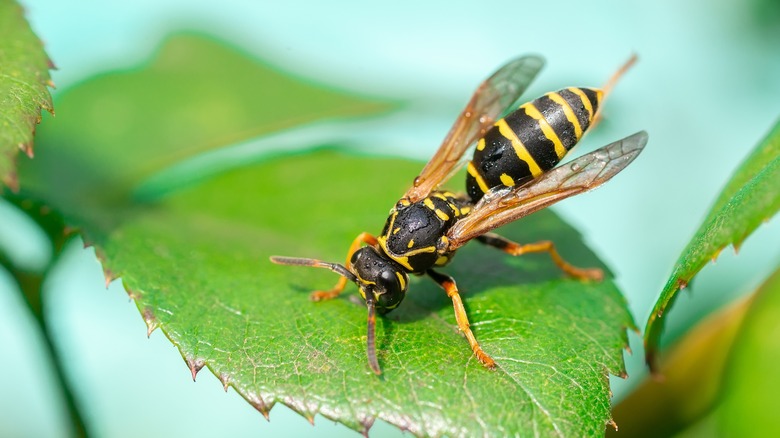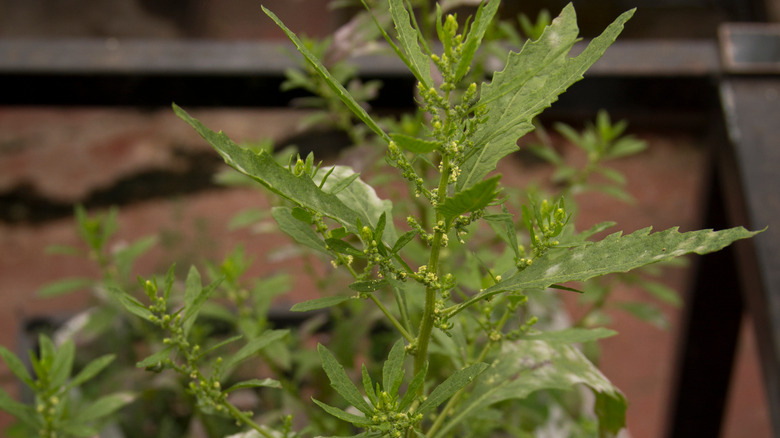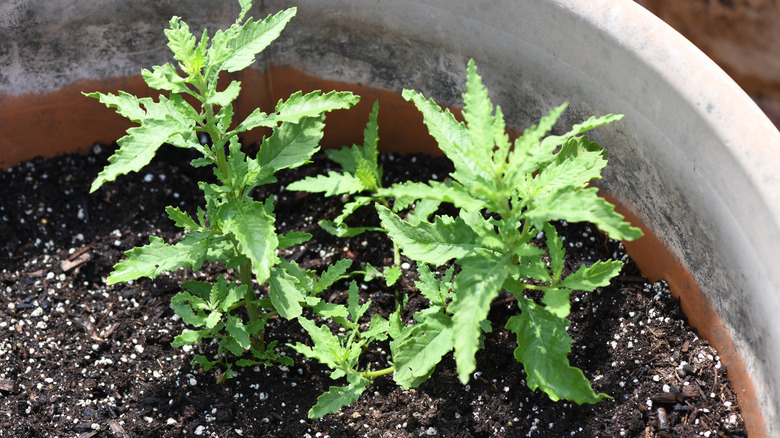The Wasp-Attracting Herb You Might Not Want To Plant In Your Garden
There is nothing worse than discovering your backyard has a wasp problem. Unlike bees, these buzzing insects are territorial and seem to fly around with a chip on their shoulder, launching into a sting at the slightest provocation. They can launch into an attack if you walk onto their perceived territory, and they can sting multiple times in order to protect what's theirs. Even worse, they let loose pheromones when they sting, which alerts the rest of the nearby colony they're under attack, which can trigger a swarm. Because of this, most people want to ward off pesky wasps. If you're in that boat, then you might want to take a second look at what you planted in your garden. Certain plants attract them due to their smell, and epazote is one of them.
Epazote is an herb native to Central America often used to spice beans and flavor moles. It has a very strong smell, but what it smells like depends on who you ask. Some people say it smells like turpentine and reminds them of paint thinner, while others think it has a citrusy scent. This strong odor attracts wasps, and if you're not careful, you can have a colony planting a flag in your backyard before you know it. Here is a closer look into why.
Why does epazote attract wasps
If you don't want wasps in your garden, epazote might not be the best herb to plant. It produces small, greenish flowers, and these blooms attract wasps. The scent of these flowers is so strong that it can overpower and hide the smell of surrounding blooms. Wasps are attracted to it because it's so pungent. Since it's like a beacon to them, some people choose to plant epazote in their yard as a way to control their garden pest population. Wasps hunt other insects as sustenance, making them natural pest controllers. Because of this, if you have an aphid, caterpillar, or beetle problem, they will help keep the population at bay. But if you don't have issues with pests, you might want to think twice before planting this herb.
Even worse, epazote is known to become invasive if left unchecked. Much like mint, it tends to grow and expand quickly, taking over your garden if you're not careful. It self-seeds pretty aggressively, and once it is established in your yard, it can become tough to get rid of. "It's a prolific seeder, so once it grows in your garden and it goes to seed, it's pretty safe to say you'll have it around for many years to come," Professor Miguel Gutierrez told Pasadena Weekly. To avoid this, plant them in containers.
How to grow epazote without attracting wasps
Instead of dealing with an infestation and brainstorming ways to get rid of wasps, you can take steps to make epazote less of a pest magnet. The first workaround is to plant it outside the high-traffic areas of your garden. Avoid growing it near your patio, kids' play sets, vegetable garden, or flower beds. Instead, plant it in a corner of your yard you don't generally frequent. This will make the wasps less of a nuisance and danger since they won't be buzzing around areas you like to occupy.
If you would prefer to avoid attracting wasps altogether, then your best option would be to grow it in a container indoors. Since these herbs grow fairly tall — up to 3 or 4 feet when fully matured — you want to choose a medium-sized container to give it enough room to grow. It enjoys being in full sun when planted outside, so ensure you put the planter on your sunniest windowsill, preferably in a south-facing window since it receives the most sunlight and heat. This is important since both elements help make the herb more flavorful.


